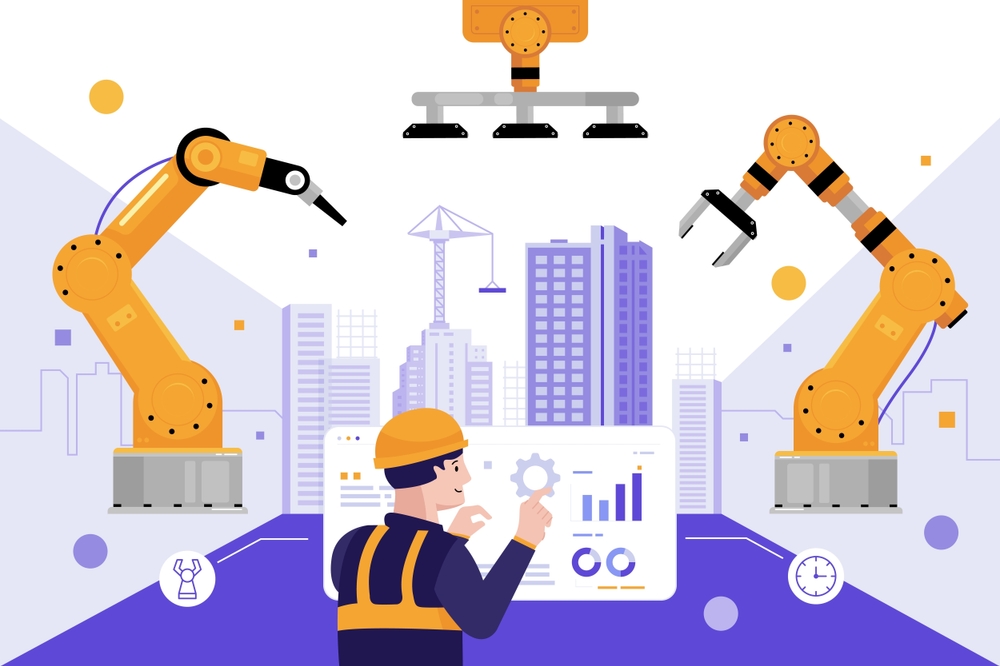Technology Can Improve Collaboration in Construction Projects
How Technology Can Improve Collaboration in Construction Projects

Collaboration in Construction Projects: Collaboration is essential to the success of any construction project, as it involves multiple stakeholders, including architects, engineers, project managers, contractors, and subcontractors. With so many people involved, miscommunication and lack of coordination can lead to costly delays, budget overruns, and quality issues. Fortunately, advancements in technology are improving collaboration, making it easier for teams to work together seamlessly across all phases of a project.
Here’s how technology is enhancing collaboration in construction projects.
1. Real-Time Communication Tools
Effective communication is critical in construction projects, where decisions often need to be made quickly to keep the project on track. Technology enables real-time communication across teams, ensuring everyone stays informed and connected.
Benefits:
- Instant Messaging and Video Conferencing: Tools like Slack, Microsoft Teams, and Zoom allow for instant messaging and virtual meetings, ensuring all team members are easily reachable, even if they are on different sites.
- Mobile Communication: Mobile apps give project managers, field workers, and other team members access to project information on the go, enhancing communication between on-site and off-site teams.
- Faster Decision-Making: With real-time communication, decision-makers can resolve issues more quickly, preventing delays and reducing downtime.
2. Cloud-Based Project Management Platforms
Cloud technology allows for centralized access to project information, making it easier for all stakeholders to collaborate. Platforms like Procore, Buildertrend, and Autodesk Construction Cloud provide a single source of truth for everyone involved in the project, from design to completion.
Benefits:
- Centralized Documentation: All project-related documents, such as blueprints, contracts, and schedules, can be stored and accessed in one cloud-based location, reducing the risk of miscommunication or outdated information.
- Real-Time Updates: As changes are made to the project, the platform is updated in real time, so everyone has access to the latest information, reducing confusion and minimizing the need for manual updates.
- Cross-Team Collaboration: Cloud platforms enable collaboration between different teams and disciplines (e.g., architects, engineers, and contractors), ensuring everyone has access to the same project details.
3. Building Information Modeling (BIM)
Building Information Modeling (BIM) is a transformative technology that allows teams to work collaboratively on 3D models of a building. BIM promotes better coordination between stakeholders and minimizes errors in the construction process by providing a clear, detailed view of the project.
Benefits:
- Visual Collaboration: Teams can visualize the project in 3D, enabling better understanding and communication about design and construction details.
- Clash Detection: BIM identifies potential conflicts between different elements (e.g., plumbing, electrical systems) before construction begins, reducing costly mistakes and delays.
- Better Planning: BIM allows for more accurate planning and coordination, helping teams collaborate on timelines, materials, and budgets with greater precision.
4. Construction-Specific Collaboration Software
Collaboration software designed specifically for the construction industry can streamline workflows and improve communication between teams. Tools like PlanGrid and Fieldwire allow teams to share plans, track progress, and communicate about specific tasks, all within the platform.

Benefits:
- Task Management: These platforms enable project managers to assign tasks, set deadlines, and track progress in real time, ensuring everyone stays on the same page.
- Document Sharing: Plans, blueprints, and documents can be shared instantly with the entire team, eliminating the need for physical copies or long email threads.
- On-Site and Off-Site Collaboration: Field workers can upload photos, notes, and updates directly from the job site, giving remote team members real-time insights into progress and issues.
5. Mobile Apps for Field Collaboration
Mobile apps are playing a crucial role in improving collaboration between office teams and field workers. These apps allow workers on-site to access project information, report issues, and share updates in real time, ensuring there is no disconnect between what happens on-site and what is being planned in the office.
Benefits:
- Instant Access to Project Data: Workers on-site can use mobile apps to view plans, schedules, and other critical documents, reducing the risk of errors caused by outdated or missing information.
- Real-Time Reporting: Field workers can use mobile apps to report issues, such as delays or safety concerns, immediately, allowing project managers to address problems before they escalate.
- Photo and Video Sharing: Field workers can upload photos and videos directly from the site, providing off-site managers and stakeholders with a clear view of the project’s progress.
6. Drones for Site Monitoring and Collaboration
Drones are becoming increasingly popular in construction projects for site monitoring and data collection. They provide real-time aerial views of the construction site, helping teams collaborate more effectively by providing accurate and up-to-date visuals of the project’s progress.
Benefits:
- Enhanced Site Surveys: Drones can quickly survey large areas, providing accurate measurements and detailed visuals that help teams understand site conditions and progress.
- Progress Monitoring: Teams can monitor the progress of the project in real time, comparing drone footage with project plans to ensure everything is on track.
- Improved Communication: Drones provide a clear view of the project that can be shared with remote stakeholders, allowing for more effective communication and decision-making.
7. Digital Twins and 4D Scheduling
Digital twins are virtual replicas of physical structures that allow teams to simulate construction processes and outcomes. When combined with 4D scheduling, digital twins allow teams to visualize the project timeline, helping all stakeholders understand how different phases of the project will unfold.
Benefits:
- Simulate Construction Phases: Teams can collaborate on construction timelines, simulating each phase of the project to identify potential challenges before they occur.
- Scenario Planning: Digital twins enable teams to test different scenarios, such as changes in materials or schedules, and assess the potential impact on the project, improving decision-making.
- Real-Time Collaboration: Teams can collaborate in real time on digital twins, making adjustments and improvements to the virtual model before work begins on-site.
8. Artificial Intelligence (AI) for Predictive Collaboration
AI technology is making it easier for construction teams to predict potential risks and optimize workflows. AI-driven tools can analyze data from past projects to identify patterns and recommend solutions, helping teams collaborate more effectively by providing data-driven insights.
Benefits:
- Risk Prediction: AI can analyze project data and identify potential risks, such as delays or cost overruns, allowing teams to collaborate on solutions before problems arise.
- Optimized Resource Allocation: AI tools can recommend the most efficient use of resources, helping teams collaborate on scheduling and materials management.
- Data-Driven Decision Making: AI-powered tools provide teams with insights based on historical data, improving collaboration by ensuring decisions are informed and strategic.
9. Virtual and Augmented Reality (VR/AR) for Design Collaboration
Virtual reality (VR) and augmented reality (AR) are powerful tools for collaboration in the design and planning stages of construction. VR allows teams to immerse themselves in a virtual version of the building, while AR overlays digital information onto the physical world, providing a more interactive way to collaborate on design.
Benefits:
- Immersive Design Reviews: Teams can use VR to walk through a virtual version of the project, allowing for better collaboration on design decisions.
- AR for On-Site Collaboration: AR can be used to overlay digital blueprints onto the physical site, helping teams collaborate on real-time adjustments and problem-solving.
- Client Collaboration: VR and AR tools allow clients to visualize the project before construction begins, improving communication and ensuring alignment between stakeholders.
Conclusion
Technology is revolutionizing collaboration in construction projects, helping teams work together more efficiently and effectively. From real-time communication tools to advanced platforms like BIM and digital twins, technology ensures that all stakeholders have access to the information they need to collaborate successfully. By embracing these tools, construction teams can improve project outcomes, reduce risks, and stay on schedule and within budget.
External Resources for Legal Guidance
Collaboration in Construction Projects
Read more related articles to enhance your knowledge and make informed decisions
10 Essential Steps in the Building Construction Process
How to Choose the Right Materials for Your Construction Project








